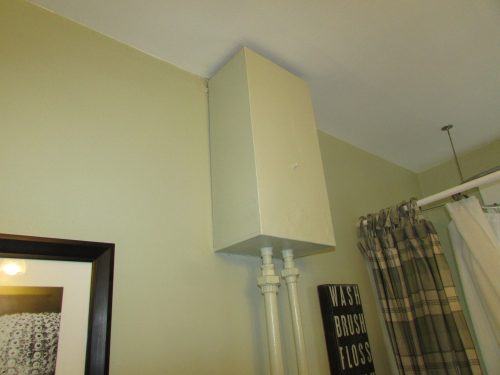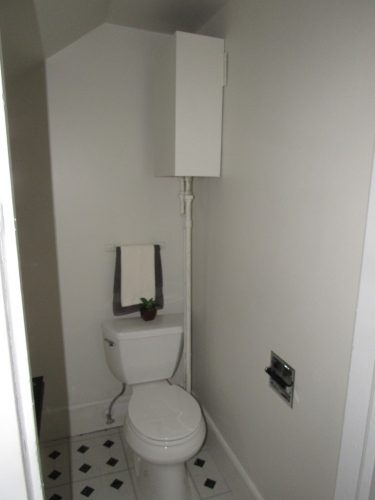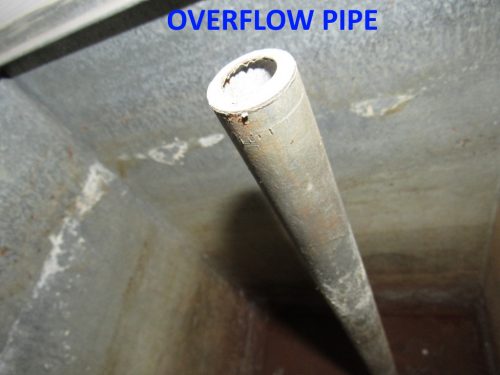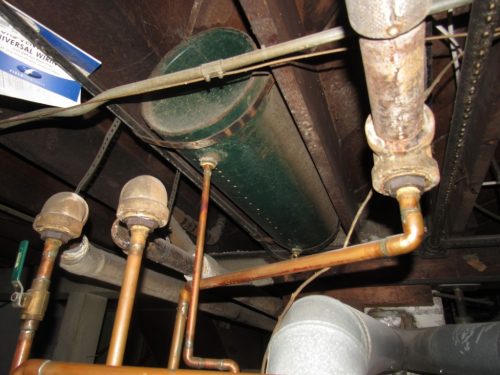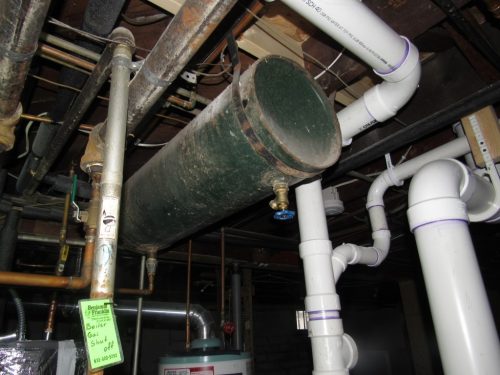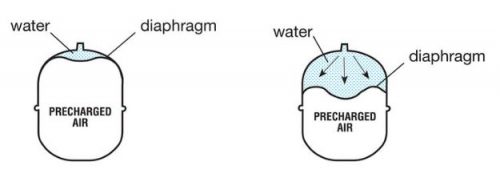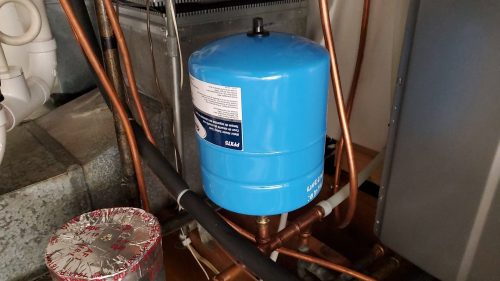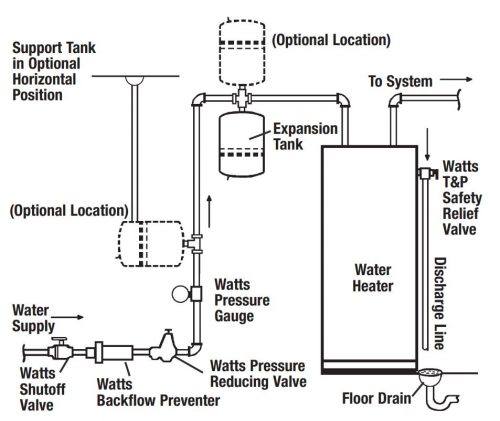As I mentioned in last week’s blog post, expansion tanks are required when water in a home can’t expand back into the water main. This might be caused by a check valve, a backflow preventer, or a pressure regular. Occasionally, people will still have problems with leaking relief valves, even when an expansion tank has been installed. In those cases, it’s probably the result of improper installation or a problem with the expansion tank. To help understand how an expansion tank works, here’s a brief walk down history lane.
Open-air tanks
Residential expansion tanks have gone through a lot of changes over time. The oldest expansion tanks I occasionally come across are in really old houses in Minneapolis and Saint Paul. These were installed as part of the hot water heating system, in conjunction with the boiler. As a boiler would heat up the water in the radiators and radiator pipes, the water would expand. To give that water room to expand, you’d have an open-air expansion tank installed higher than the highest boiler in the home.
These open-air expansion tanks would be mounted high up on a wall, and there would be two pipes running to them. One would supply water, and the other would be the overflow pipe. If too much water was added to the boiler system, this would prevent the tank from spilling water into the room.
The overflow pipe is really just an open pipe, much like the overflow pipe in a toilet tank. The image below shows the inside of an expansion tank.
Old-school closed expansion tanks
By the 1920s, closed expansion tanks started taking the place of open-air tanks, and homes started having closed heating systems. These expansion tanks were installed at the ceiling in the basement, in-between the floor joists.
These steel tanks were big and basic. As water would get added to the system, some water would enter the tank, but because there was nowhere for the air to leave, the tank would simply get pressurized. As water expanded the air would compress, and you wouldn’t have problems with pressure. At least for a while. Over time, the air would be absorbed by the water, and you’d end up with a waterlogged expansion tank.
When an expansion tank is waterlogged, it’s useless. Water can’t expand. Once that happens, the pressure relief valve on the boiler gets a chance to do its job, and it relieves pressure. This is typically called leaking, but pressure relief valves take offense at that term. They prefer the term working.
If you have a leaking pressure relief valve on a boiler system, check the pressure gauge. If it’s anywhere close to 30 psi, you might have a problem with your expansion tank. When these old tanks get waterlogged, they need to be drained. It doesn’t seem like a big deal, but it can be. These tanks are usually at least forty years old, and those drains valves are typically rusted shut. When these hot water heating systems get new boilers installed, the expansion tanks are upgraded to much smaller, modern expansion tanks.
Modern expansion tanks
Today’s expansion tanks have a rubber diaphragm to keep the water and air separate. When the water pressure increases, the air compresses, but it never touches the water.
Because the water and air are kept separate, the air in modern tanks never gets absorbed into the water, and these tanks remain maintenance-free. The only tricky part about these modern expansion tanks is that they need to be pre-charged before they’re installed. If you’re installing an expansion tank on your potable water piping, you need to check the pressure in your house and then pressurize your tank to match that. This can be done with a tire pump, and you check the pressure with a tire gauge. Could that be any more convenient?
When a potable water expansion tank is installed, it can be installed vertically or horizontally on the cold water piping that feeds the water heater. The diagram below from Watts illustrates this nicely.
These expansion tanks come in several different sizes. To choose the right size, you’ll need to know the size of your water heater and the water pressure in your home. Consult with the manufacturer’s sizing chart to figure out which tank you need.

